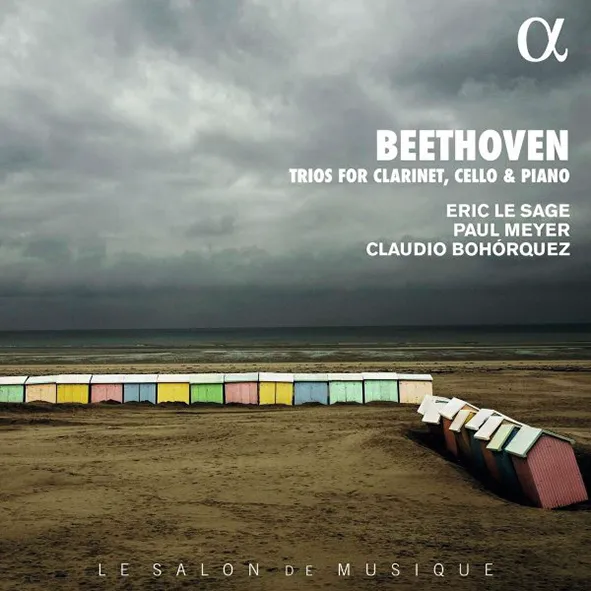
Beethoven Piano Trio in B flat, Op. 11 (Gassenhauer); Clarinet Trio, Op. 38 Eric Le Sage (piano), Paul Meyer (clarinet), Claudio Bohórquez (cello) Alpha Classics ALPHA 405 58:07 mins
You can’t have too many recorded versions of Beethoven’s core creations, but there are times when it feels as though we have enough. This may explain the current vogue for exhuming his more peripheral works: Pavel Kolesnikov’s Hyperion recording of some early piano pieces without opus numbers, for example, and now these trios for piano, clarinet, and cello. The new popularity of woodwind instruments may have stimulated the composition of Op. 11 in 1797; the resulting combination may be unusual, but it works.
Op. 11 has the bracing spareness and raw muscular energy of the early piano sonatas, and its first movement trades in the shock value of unexpected key changes. The theme of the Adagio, introduced by the cello con espressione, is drawn from the minuet of the piano sonata Op. 49 No. 2 which had been composed the previous year; with its majestic reserve, this is a fine example of the young Beethoven’s mastery of the lyrical slow-movement form. The trio’s nickname ‘Gassenhauer’ refers to the finale, whose theme was taken from a popular song to be heard in the streets (‘Gassen’); here the song gives rise to some elegantly kaleidoscopic variations. The theme of that same Op. 49 minuet also crops up in the Op. 38 trio, but the variations in this later work are based on a Rhine boatmen’s song. At times one misses the effects of the Septet of which this work is an arrangement: the piano can’t replicate the profound tenderness of the strings in the Adagio, nor can the cello match the mellow grace of the horn in the final Andante. But these players deliver a coruscating performance, and very successfully present this hackneyed work – of which Beethoven himself grew tired – in a new light.
Michael Church